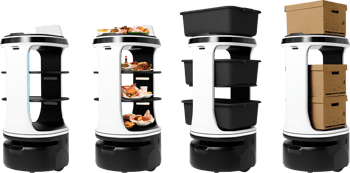No one in hospitality wins when gas prices rise the way they have in 2022. Since May of last year, when the average U.S. price of a gallon of gas swooned to $1.78 — close to a 15-year low — prices have more than doubled. After a long and steady climb, average prices crested $4 a gallon in March, and have remained above that level for 11 straight weeks and counting.
That’s hard on the bartender commuting to her nightly shift at the wings joint. That’s hard on the beachside burger shack that relies on road-tripping families for its business. And it’s hard on the drive-thru shake joint that counts on teens spending their extra $10 on a sweet snack instead of a fill-up.
So with the caveat that I know things are tough all over, I want you to imagine the feeling in my stomach when I roll my food truck up to the pump. She’s a 1979 Dodge C300 that can squeeze about 6 highway miles out of a single gallon of ethanol-free fuel. My last refueling set me back $110.98, a significant chunk of my revenue from a catering event.
The alpine-steep price of gas doesn’t just get my blood pressure up; it threatens the entire business model that I, and thousands of other food truck operators, labor under. I have some tips and workarounds to offer, mind you. But I’m not overstating matters to say every food truck on the road in 2022 is feeling the pain.
Food trucks are struggling just to stay afloat these days
Steep fuel prices threaten not just the venture. They threaten the very spirit of food trucks. I’m used to being nimble enough to attend small events, where a handful of walk-ups ensure I’ll break even for the day. Now, without an appearance fee to cover gas, I simply can’t risk it. Since the gas surge, I’ve gotten invites to events that I had to turn down, for fear the 90-mile round trip — a $75 upfront investment, up from $30 a year ago — would take too big a bite out of my earnings. Catering a small event for 40 people or so that may gross $500 is a lot less appealing when factoring in these increased fuel costs, possibly leaving me with as little as $200 in net profit after food costs. After spending six or eight hours prepping, driving, cooking, driving again, and cleaning, it hardly seems worth it.
The fuel bump sneaks up on us food trucks in other ways, too. Unlike restaurants, which receive shipments of supplies in bulk by truck, most of us drive around town in personal vehicles to pick up ingredients, drinks, and other service necessities. Oh, and about those supplies? A big one for many of us is propane, the fuel that keeps our fryers and grills cooking. Propane prices are approaching historical highs, averaging nearly $3 per gallon nationwide. In Florida, where I run my food truck, our $5 per gallon propane is the most expensive in the country. There are few options for places to refill your propane tanks, which requires driving your food truck to a refilling station, or paying a premium price for a propane delivery truck to come to you. And our $100+ trips to the pump don’t include the gas we use to keep our portable generators humming.
Meanwhile nearly every product and supply has climbed in price, because everything has to be shipped somewhere. Particularly brutal are spikes in the price of cooking oil, plastic items like disposable utensils, and vinyl items like food service gloves. French fries, made from potatoes grown in northern states like Idaho or Maine, have also seen a ridiculous price spike. In the last three months, the fries I’ve been purchasing have gone from $20.99 a case to $25.99 a case, an increase of over 20%. Food truck margins these days are so thin as to be translucent.
This puts us in a bind even on the best days. When you want to invest, upgrade, or replace broken equipment, things get even more dire. Andrew Theodres at Bay Area Wholesale, a restaurant equipment distributor in Largo, Florida, told me that the price for him to get a container full or restaurant equipment shipped from China has risen from $7,000 last year to north of $40,000 this year. “I’m looking at lead times of over 30 weeks for a domestic convection oven, and my shipping prices from California have gone from $400 to nearly $1,200 per unit,” he told me. The culprit for those runaway trucking prices? Diesel flirting with the $6-a-gallon mark.
Customers, like us, are feeling the pinch. In the most pessimistic version of events, food trucks and their customers are now like two teens, both with a crush, who never work up the will to start a conversation. It’s expensive for me to go to the places where customers will be. It’s expensive for them to come to me. The only saving grace here is that delivery services such as Uber Eats are also having to adjust their prices. Food trucks may be feeling this bite most acutely, but every restaurant we’re competing against also is fighting the rising costs.
As rough as the numbers are, we food truck operators will adapt
For me and for other food truck operators, we have to get creative and pick our spots. With fewer people willing to drive long distances, we should be on the lookout for high-density, pedestrian-friendly events. I’m looking forward to participating in the upcoming Cuban Sandwich Festival in Tampa, which should be a lucrative, high-volume event that will require less than 10 miles of driving for me.
Finding a semi-permanent location, such as teaming up with a local bar or brewery, may be the best way to stay off the road while still keeping the kitchen open. Raising prices, both for public events and private parties, may be inevitable. If we level with our patrons, they should be understanding. Prices are going up for everyone, after all.
I’ve had to raise my food truck appearance fee for private catering bookings, to better cover my expenses when quoting smaller events. As summer concerts and festivals pick up, I’m expecting that more volume might save me — selling enough food to make up for the higher fuel costs. Hopefully the pent-up demand for larger outdoor events will allow us food trucks to keep up with fuel prices and other inflationary expenses. People still gotta eat. And especially if people cut back on vacations and road trips, a visit to a local food truck remains a hip and handy way to get that sustenance.
[Photo by Arturo Rey on Unsplash]





